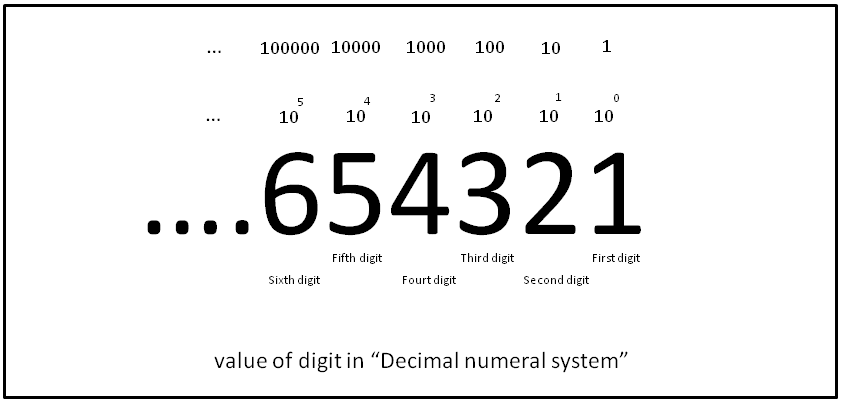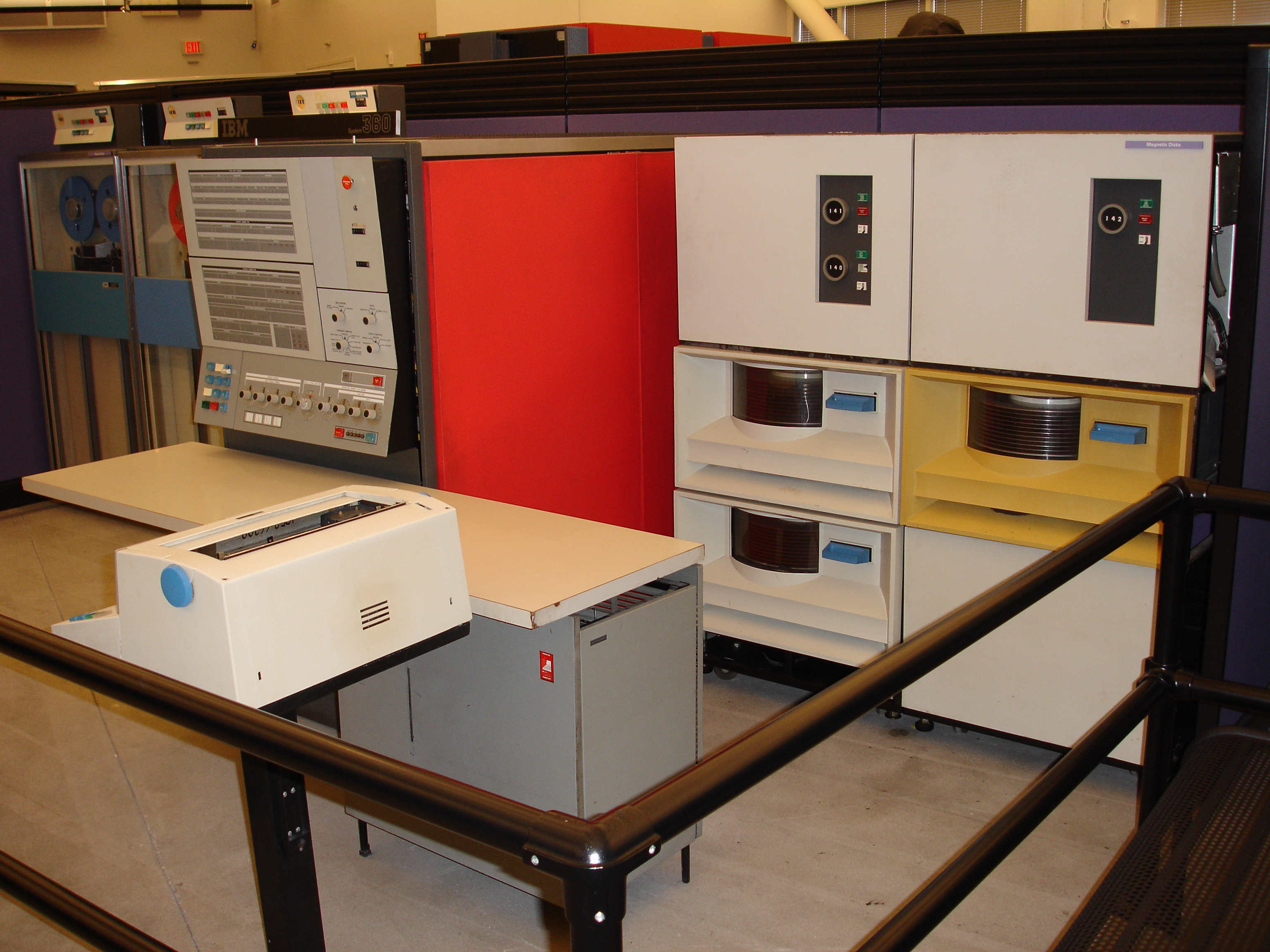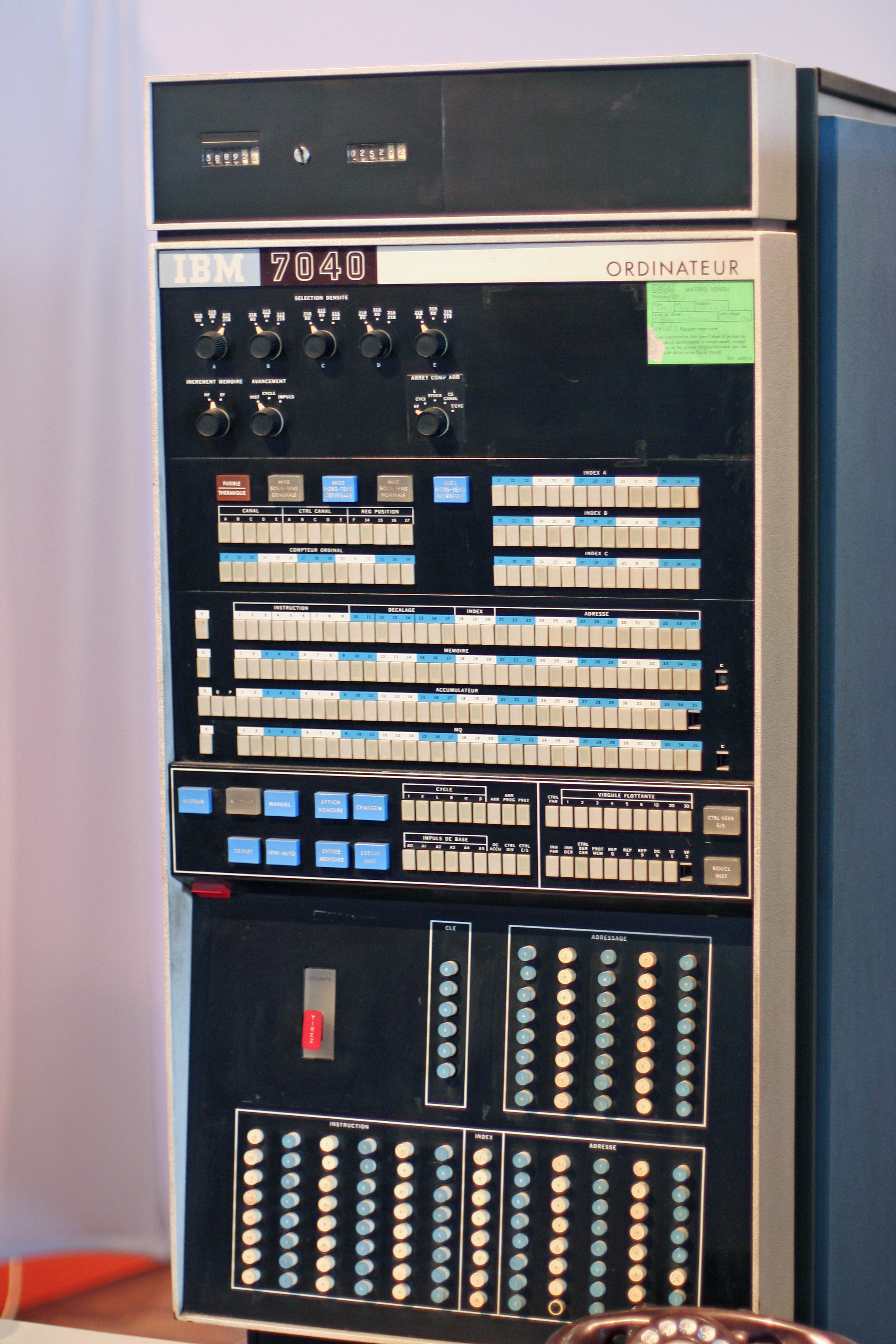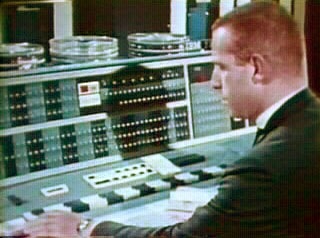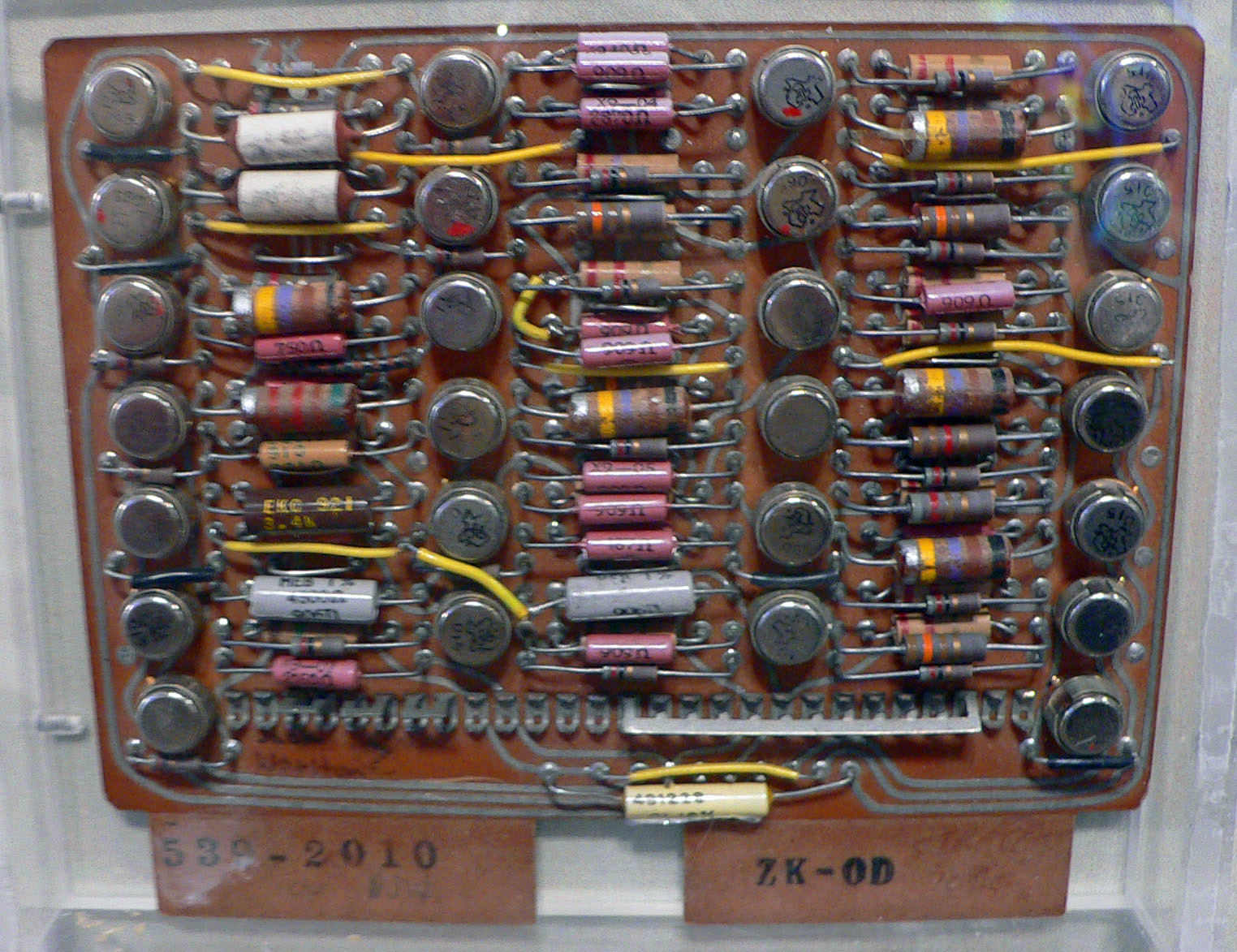|
Timeline Of Binary Prefixes
This timeline of binary prefixes lists events in the history of the evolution, development, and use of unit of measurement, units of measure that are germane to the definition of the binary prefixes by the International Electrotechnical Commission (IEC) in 1998, used primarily with units of information such as the bit and the byte. Historically, computers have used many systems of internal data representation, methods of operating on data elements, and data addressing. Early decimal computers included the ENIAC, UNIVAC 1, IBM 702, IBM 705, IBM 650, IBM 1400 series, and IBM 1620. Early binary addressed computers included Zuse Z3, Colossus computer, Colossus, Whirlwind (computer), Whirlwind, AN/FSQ-7, IBM 701, IBM 704, IBM 709, IBM 7030, IBM 7090, IBM 7040, IBM System/360 and Programmed Data Processor, DEC PDP series. Decimal systems typically had memory configured in whole decimal multiples, e.g., blocks of 100 and later . The unit abbreviation '' or '' if it was used, repres ... [...More Info...] [...Related Items...] OR: [Wikipedia] [Google] [Baidu] |
Whirlwind (computer)
Whirlwind I was a Cold War-era List of vacuum-tube computers, vacuum-tube computer developed by the Massachusetts Institute of Technology, MIT Servomechanisms Laboratory for the United States Navy, U.S. Navy. Operational in 1951, it was among the first digital electronic computers that operated in real-time for output, and the first that was not simply an electronic replacement of older mechanical systems. It was one of the first computers to calculate in Bit-level parallelism, bit-parallel (rather than serial computer, bit-serial), and was the first to use magnetic-core memory. Its development led directly to the Whirlwind II design used as the basis for the United States Air Force Semi-Automatic Ground Environment, SAGE air defense system, and indirectly to almost all business computers and minicomputers in the 1960s, particularly because of the mantra "short word length, speed, people." Background During World War II, the United States Navy, U.S. Navy's Naval Research Lab app ... [...More Info...] [...Related Items...] OR: [Wikipedia] [Google] [Baidu] |
Decimal
The decimal numeral system (also called the base-ten positional numeral system and denary or decanary) is the standard system for denoting integer and non-integer numbers. It is the extension to non-integer numbers (''decimal fractions'') of the Hindu–Arabic numeral system. The way of denoting numbers in the decimal system is often referred to as ''decimal notation''. A decimal numeral (also often just ''decimal'' or, less correctly, ''decimal number''), refers generally to the notation of a number in the decimal numeral system. Decimals may sometimes be identified by a decimal separator (usually "." or "," as in or ). ''Decimal'' may also refer specifically to the digits after the decimal separator, such as in " is the approximation of to ''two decimals''". Zero-digits after a decimal separator serve the purpose of signifying the precision of a value. The numbers that may be represented in the decimal system are the decimal fractions. That is, fractions of the form , w ... [...More Info...] [...Related Items...] OR: [Wikipedia] [Google] [Baidu] |
Metric System
The metric system is a system of measurement that standardization, standardizes a set of base units and a nomenclature for describing relatively large and small quantities via decimal-based multiplicative unit prefixes. Though the rules governing the metric system have changed over time, the modern definition, the International System of Units (SI), defines the metric prefixes and seven base units: metre (m), kilogram (kg), second (s), ampere (A), kelvin (K), Mole (unit), mole (mol), and candela (cd). An SI derived unit is a named combination of base units such as hertz (cycles per second), Newton (unit), newton (kg⋅m/s2), and tesla (unit), tesla (1 kg⋅s−2⋅A−1) and in the case of Celsius a shifted scale from Kelvin. Certain units have been Non-SI units mentioned in the SI#Units officially accepted for use with the SI, officially accepted for use with the SI. Some of these are decimalised, like the litre and electronvolt, and are considered "metric". Others, like ... [...More Info...] [...Related Items...] OR: [Wikipedia] [Google] [Baidu] |
Demi (binary Prefix)
A metric prefix is a unit prefix that precedes a basic unit of measure to indicate a multiple or submultiple of the unit. All metric prefixes used today are decadic. Each prefix has a unique symbol that is prepended to any unit symbol. The prefix ''kilo'', for example, may be added to ''gram'' to indicate ''multiplication'' by one thousand: one kilogram is equal to one thousand grams. The prefix '' milli'', likewise, may be added to ''metre'' to indicate ''division'' by one thousand; one millimetre is equal to one thousandth of a metre. Decimal multiplicative prefixes have been a feature of all forms of the metric system, with six of these dating back to the system's introduction in the 1790s. Metric prefixes have also been used with some non-metric units. The SI prefixes are metric prefixes that were standardised for use in the International System of Units (SI) by the International Bureau of Weights and Measures (BIPM) in resolutions dating from 1960 to 2022. Since 2009, they ... [...More Info...] [...Related Items...] OR: [Wikipedia] [Google] [Baidu] |
Programmed Data Processor
Programmed Data Processor (PDP), referred to by some customers, media and authors as "Programmable Data Processor," is a term used by the Digital Equipment Corporation from 1957 to 1990 for several lines of minicomputers. The name "PDP" intentionally avoids the use of the term "computer". At the time of the first PDPs, computers had a reputation of being large, complicated, and expensive machines. The venture capitalists behind Digital (especially Georges Doriot) would not support Digital's attempting to build a "computer" and the term "minicomputer" had not yet been coined. So instead, Digital used their existing line of logic modules to build a ''Programmed Data Processor'' and aimed it at a market that could not afford the larger computers. The various PDP machines can generally be grouped into families based on word length. Series Members of the PDP series include: ;PDP-1: The original PDP, an 18-bit computing, 18-bit four-19-inch rack, rack machine used in early tim ... [...More Info...] [...Related Items...] OR: [Wikipedia] [Google] [Baidu] |
IBM System/360
The IBM System/360 (S/360) is a family of mainframe computer systems announced by IBM on April 7, 1964, and delivered between 1965 and 1978. System/360 was the first family of computers designed to cover both commercial and scientific applications and a complete range of applications from small to large. The design distinguished between architecture and implementation, allowing IBM to release a suite of compatible designs at different prices. All but the only partially compatible Model 44 and the most expensive systems use microcode to implement the instruction set, featuring 8-bit byte addressing and fixed-point binary, fixed-point decimal and hexadecimal floating-point calculations. The System/360 family introduced IBM's Solid Logic Technology (SLT), which packed more transistors onto a circuit card, allowing more powerful but smaller computers. System/360's chief architect was Gene Amdahl, and the project was managed by Fred Brooks, responsible to Chairman Thomas J. Wat ... [...More Info...] [...Related Items...] OR: [Wikipedia] [Google] [Baidu] |
IBM 7040
The IBM 7040 was a historic but short-lived model of transistor computer built in the 1960s. History It was announced by IBM in December 1961, but did not ship until April 1963. A later member of the IBM 700/7000 series of scientific computers, it was a scaled-down version of the IBM 7090. It was not fully compatible with the 7090. Some 7090 features, including index registers, character instructions and floating point, were extra-cost options. It also featured a different input/output architecture, based on the IBM 1414 data synchronizer, allowing more modern IBM peripherals to be used. A model designed to be compatible with the 7040 with more performance was announced as the 7044 at the same time. Peter Fagg headed the development of the 7040 under executive Bob O. Evans. A number of IBM 7040 and 7044 computers were shipped, but it was eventually made obsolete by the IBM System/360 family, announced in 1964. The schedule delays caused by IBM's multiple incompatible archit ... [...More Info...] [...Related Items...] OR: [Wikipedia] [Google] [Baidu] |
IBM 7090
The IBM 7090 is a second-generation Transistor computer, transistorized version of the earlier IBM 709 vacuum tube mainframe computer that was designed for "large-scale scientific and technological applications". The 7090 is the fourth member of the IBM 700/7000 series#Scientific Architecture, IBM 700/7000 series scientific computers. The first 7090 installation was in December 1959. In 1960, a typical system sold for $2.9 million (equivalent to $ million in ) or could be rented for $63,500 a month (). The 7090 uses a 36-bit word length, with an address space of 32,768 words (15-bit addresses). It operates with a basic memory cycle of 2.18 μs, using the IBM 7302 Core Storage Magnetic-core memory, core memory technology from the IBM 7030 (Stretch) project. With a processing speed of around 100 FLOPS, Kflop/s, the 7090 is six times faster than the 709, and could be rented for half the price. An upgraded version, the 7094, was up to twice as fast. Both the 7090 and the 7094 ... [...More Info...] [...Related Items...] OR: [Wikipedia] [Google] [Baidu] |
IBM 7030
The IBM 7030, also known as Stretch, was IBM's first transistorized supercomputer. It was the fastest computer in the world from 1961 until the first CDC 6600 became operational in 1964."Designed by Seymour Cray, the CDC 6600 was almost three times faster than the next fastest machine of its day, the IBM 7030 Stretch." Originally designed to meet a requirement formulated by Edward Teller at Lawrence Livermore National Laboratory, the first example was delivered to Los Alamos National Laboratory in 1961, and a second customized version, the IBM 7950 Harvest, to the National Security Agency in 1962. The Stretch at the Atomic Weapons Research Establishment at Aldermaston, England was heavily used by researchers there and at AERE Harwell, but only after the development of the S2 Fortran compiler which was the first to add dynamic arrays, and which was later ported to the Ferranti Atlas of Atlas Computer Laboratory at Chilton. The 7030 was much slower than expected and ... [...More Info...] [...Related Items...] OR: [Wikipedia] [Google] [Baidu] |
IBM 709
The IBM 709 is a computer system that was announced by IBM in January 1957 and first installed during August 1958. The 709 was an improved version of its predecessor, the IBM 704, and was the third of the IBM 700/7000 series of scientific computers. The improvements included overlapped input/output, indirect addressing, and three "convert" instructions which provided support for decimal arithmetic, leading zero suppression, and several other operations. The 709 had 32,768 words of 36-bit magnetic-core memory and could execute 42,000 add or subtract instructions per second. It could multiply two 36-bit integers at a rate of 5000 per second. An optional hardware emulator executed old IBM 704 programs on the IBM 709. This was the first commercially available emulator. Registers and most 704 instructions were emulated in 709 hardware. Complex 704 instructions such as floating-point trap and input-output routines were emulated in 709 software. The FORTRAN Assembly Program was intro ... [...More Info...] [...Related Items...] OR: [Wikipedia] [Google] [Baidu] |
